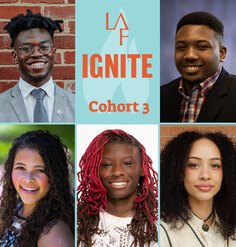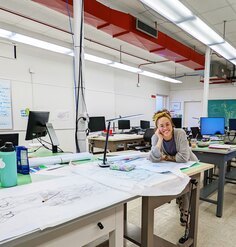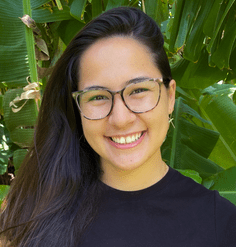Olmsted Scholar Feature: Delhi in 3 Days
By Lauren Hackney, 2010 National Olmsted Scholar Finalist
In mid-November, I traveled to Delhi, India with UVA professor Peter Waldman to attend a U21-sponsored conference. U21 is an international network of 23 universities who engage in research collaborations, together and with cities and environments around the world, that facilitate several ongoing projects, including the Water Futures for Sustainable Cities Project. Our focus was Theme 2, restoration/rehabilitation of urban river corridors – in this case, the Yamuna River, a tributary of the Ganges. The conference brought together geomorphologists, statisticians, environmental scientists, and students at Delhi University to study the Yamuna through hydrological, quantitative, and qualitative and cultural lenses. As designers, Professor Waldman and I were to address the role of architecture and landscape architecture as agents and products of urbanization, and the opportunity of our disciplines to negotiate the intersection of urbanization processes with ecological and geological processes. For our 72 hours in India, the most succinct observation I have is: India is a place of many, many contrasts.
After arriving in Delhi to a hazy sky and a pre-deplaning dousing of mosquito repellent (sprayed by flight attendants throughout the plane!), Delhi University professors spoke to us about the large spatial spread of this conference, about the issues wrapped up in the concept of Water Futures – food security, energy, public health, biodiversity – and about the feedback mechanism between urbanization and geological processes. The vocabulary resonated between landscape architecture/architecture and the other disciplines in attendance: ideas of geomorphological connectivity operating on a range of temporal and spatial scales; cultural values of water with hygiene and ecosystem health implications; anthropogenic and socioeconomic factors relative to water systems; mediated and abstract quantification of material exchange across river regions. Abstraction felt especially palpable, as I felt entirely unprepared to make sense of an urban condition fluctuating more rapidly than almost any other in the world.
Our second day took us to two barrages along the Yamuna and to the extraction area for Delhi’s water supply. Our first stop was Wazirabad, the convergence of two stormwater drains flowing into the Yamuna. Nearly invisible from street level at this time of year in northern Delhi, the water’s presence is mostly manifest through smell: strongly sulfuric and overwhelming. Driving further north to Delhi’s water source, a traffic jam (pretty common, we discovered) re-routed our vans through a village more dense than anything I’ve seen – a matrix of mostly dilapidated structures, dirt roads wide enough for one car and two people, open sewers.
A Delhi University professor involved in the water supply engineering explained that 35 million gallons per day are extracted from groundwater (replenished during the flood season), which meets only about 20% of the demand; of this, 30% is lost to leakage and pilferage in supply infrastructure. Beyond structural problems, political negotiation is a major factor, regarding drawdown of regional river levels and proposed local regulation of wells, not politically viable until the city guarantees widespread water infrastructure; contamination of local aquifers is also problematic, though limited in scope, and high arsenic concentrations in central Delhi contaminate urban agricultural plots.
Seeing the expansive floodplain in the dry season and imagining its inundation by 8’ of water during flood season, learning more about ongoing research and supply/demand issues, and hearing familiar phrases – shifting floodplains, space for the river – described by scientists and statisticians in their conception of the river’s adaptation, I saw many opportunities for expanded, productive collaborations between these disciplines and design disciplines that I had not anticipated. For me, this day raised the most pressing questions of the trip. In a place of extreme contrast between wealth and poverty, intermittent infrastructure, and rapid flux of population and density, how might ‘sustainable city’ be defined? Is there a tipping point beyond which sustenance and growth of a city are no longer possible, and what is it? And, as designers, how can we define our role through these questions?
On our third day, one of Professor Waldman’s former students showed us some of the lovelier places in Delhi — Humayun’s tomb, the Red Fort, Lodi Gardens, and the Lodi Estate – and described his burgeoning architecture practice and the differences in building culture between the U.S. and India, where craft traditions are strong and construction and material practices are highly place-specific. One of our conference colleagues observed how people occupy “every square meter of space” – and it was exciting to imagine the potential for incremental and spontaneous landscapes, both permanent and seasonal – adaptation of underpasses, temporary markets, and structures in the dry riverbed, interventions in the space of the streets. The intensity of the street felt like a spatial metaphor for the intensity of this trip: navigating the superimposition and weaving of many speeds and modes of moving; cars, rickshaws, trucks, bicycles, motorbikes, walkers, all moving in a self-organizing, if chaotic, choreography –embodied the vast spectrum of experiences and questions we collected over the course of only 72 hours.
The outcome of the U21 conference is a position paper outlining a hypothesis for collaborative research using the Yamuna River + Delhi region as a case study for urban stream adaptation. For my part, I am energized by what we learned, by the discussion with local experts and international researchers, and by the inclusion of design in the conversation. Since the visit, I’ve been torn between a sense of powerlessness (does anything I’ve learned so far apply to densities, scarcities, and fluctuations like those that comprise Delhi?) and a sense of excitement about the emerging role of landscape architecture in imagining futures both for megacities and for shrinking cities.
Lauren Hackney is a Master's candidate in Landscape Architecture and Architecture at the University of Virginia. Her current thesis work is studying issues of public health and energy in shrinking cities, questioning how the regeneration of industrial sites in these communities reframes and broadens the practice of landscape architecture. She will graduate in May 2011.











